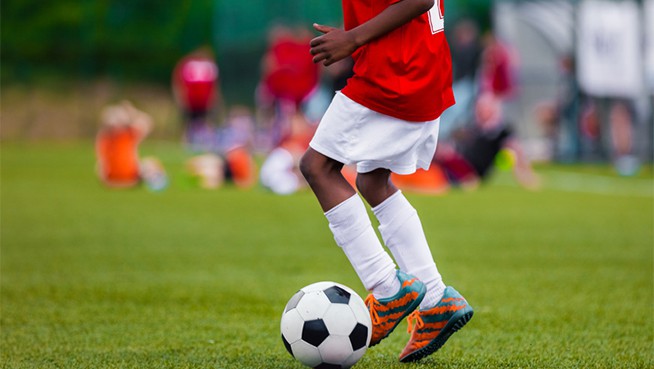How a Better Strength and Conditioning Plan Built a Women’s Boxing Beast
What does it take to be a boxer?
That’s something my client/friend Claire Quinn (@claire___quinn) knows all about. She’s an amateur boxer who’s been racking up the KOs lately and will soon be competing in the women’s final of the Chicago Golden Gloves. As a 152-pound fighter, Claire packs a powerful right cross and frequently spars with men (Most humans don’t like being punched in the face, but Claire doesn’t seem to mind.) Her high school volleyball career laid the foundation to coordinate her long limbs, and she is a good athlete. But, when Claire asked me to help with her strength and conditioning, I pictured a different plan than what you saw in Creed.
After watching video of her sparring, we agreed on three very important combat sports principles:
1. Circular movement vs. linear movement
2. Full-body coordination
3. Focus on yourself, not your opponent.
In my opinion, being elusive is equally important to being powerful. The name of the game is to hit and not get hit, so the best defense is always a—good defense! If we think of boxing like playground “tag,” the fewer times she’s “it,” the more likely she is to win. So, standing in front of someone and playing Rock-’em-Sock-’em robots might look good in movies, but it’s bad for the brain and bad for your odds of winning a fight.
Using superior footwork to get in and out of range and create favorable angles will always be a smart fighting strategy. Standing on the big monster tire, Claire shadowboxed to train circular footwork while still throwing punching combos—from both fighting stances. Sometimes, she closed her eyes to deeply reinforce mind-body connection and proprioception. Keeping her balance (and her calm) under stressful conditions (like me occasionally swinging foam rollers at her head) translates to the ring.
We also worked on coordination. Most boxers tend to only fight out of their dominant stance, which for Claire, is her left foot forward and her right leg in the rear. In our training, we strived to get her stronger in this stance, but also get her comfortable with her limbs in different positions. For example, we did a standing single-arm chest press/punch on the Hammer Jammer from her dominant stance as well as from the southpaw stance:
Claire had to stabilize from different positions, which helps provide better overall body balance and reinforces coordination on her non-dominant side. This helps eliminate imbalances and minimize weaknesses in her game. It also leads to stronger punches from either hand.
Great boxers are strong from the ground up. Strong, accurate punches aren’t just thrown with the arm or shoulder; they’re thrown with your legs and core. Those are your biggest muscle groups, and that’s where your real power is going to come from. To help Claire tap into feeling that power, we utilized moves like this Keiser Pull/Push:
Olympic lifts are a great way to build explosiveness, but they can take a lot of time and effort to learn properly. The Hammer Jammer machine allows Claire to enhance her explosiveness and power with a triple extension movement and has a very low barrier of entry:
These type of movements have been our bread and butter, along with a steady diet of conditioning work (because if you’re winded halfway through the first round, it doesn’t matter how hard you can punch). The mental side of boxing is also essential. We noticed that social media can be a gift and a curse in this sport. It might allow us to check in and scout our next opponent, but based on what we see, we can formulate misleading opinions of them. We may lose the fight in our minds before even stepping into the ring. When it comes to your mentality, the best thing you can do is focus on what you are doing—not what anyone else is doing. Do the work and trust your preparation. Bring the best version of yourself to the ring and let the cards fall where they may.
Like any athlete, boxers benefit from strength and conditioning. Their programming should prepare them for the demands of their sport. Paired with proper in-ring and boxing technique training, it can make a fighter very hard to beat!
Photo Credit: Drazen Zigic/iStock
READ MORE:
RECOMMENDED FOR YOU
MOST POPULAR
How a Better Strength and Conditioning Plan Built a Women’s Boxing Beast
What does it take to be a boxer?
That’s something my client/friend Claire Quinn (@claire___quinn) knows all about. She’s an amateur boxer who’s been racking up the KOs lately and will soon be competing in the women’s final of the Chicago Golden Gloves. As a 152-pound fighter, Claire packs a powerful right cross and frequently spars with men (Most humans don’t like being punched in the face, but Claire doesn’t seem to mind.) Her high school volleyball career laid the foundation to coordinate her long limbs, and she is a good athlete. But, when Claire asked me to help with her strength and conditioning, I pictured a different plan than what you saw in Creed.
After watching video of her sparring, we agreed on three very important combat sports principles:
1. Circular movement vs. linear movement
2. Full-body coordination
3. Focus on yourself, not your opponent.
In my opinion, being elusive is equally important to being powerful. The name of the game is to hit and not get hit, so the best defense is always a—good defense! If we think of boxing like playground “tag,” the fewer times she’s “it,” the more likely she is to win. So, standing in front of someone and playing Rock-’em-Sock-’em robots might look good in movies, but it’s bad for the brain and bad for your odds of winning a fight.
Using superior footwork to get in and out of range and create favorable angles will always be a smart fighting strategy. Standing on the big monster tire, Claire shadowboxed to train circular footwork while still throwing punching combos—from both fighting stances. Sometimes, she closed her eyes to deeply reinforce mind-body connection and proprioception. Keeping her balance (and her calm) under stressful conditions (like me occasionally swinging foam rollers at her head) translates to the ring.
We also worked on coordination. Most boxers tend to only fight out of their dominant stance, which for Claire, is her left foot forward and her right leg in the rear. In our training, we strived to get her stronger in this stance, but also get her comfortable with her limbs in different positions. For example, we did a standing single-arm chest press/punch on the Hammer Jammer from her dominant stance as well as from the southpaw stance:
Claire had to stabilize from different positions, which helps provide better overall body balance and reinforces coordination on her non-dominant side. This helps eliminate imbalances and minimize weaknesses in her game. It also leads to stronger punches from either hand.
Great boxers are strong from the ground up. Strong, accurate punches aren’t just thrown with the arm or shoulder; they’re thrown with your legs and core. Those are your biggest muscle groups, and that’s where your real power is going to come from. To help Claire tap into feeling that power, we utilized moves like this Keiser Pull/Push:
Olympic lifts are a great way to build explosiveness, but they can take a lot of time and effort to learn properly. The Hammer Jammer machine allows Claire to enhance her explosiveness and power with a triple extension movement and has a very low barrier of entry:
These type of movements have been our bread and butter, along with a steady diet of conditioning work (because if you’re winded halfway through the first round, it doesn’t matter how hard you can punch). The mental side of boxing is also essential. We noticed that social media can be a gift and a curse in this sport. It might allow us to check in and scout our next opponent, but based on what we see, we can formulate misleading opinions of them. We may lose the fight in our minds before even stepping into the ring. When it comes to your mentality, the best thing you can do is focus on what you are doing—not what anyone else is doing. Do the work and trust your preparation. Bring the best version of yourself to the ring and let the cards fall where they may.
Like any athlete, boxers benefit from strength and conditioning. Their programming should prepare them for the demands of their sport. Paired with proper in-ring and boxing technique training, it can make a fighter very hard to beat!
Photo Credit: Drazen Zigic/iStock
READ MORE:











